Stars of Spring
Eagerly anticipated, exciting and colourful, spring is one big glamorous party with superstar guests in very best dress.
The early arrivers come in all shapes and guises – from the elegant michelias with their evocative fragrance, to the dazzling brilliance of magnolias, rhododendrons and bridal white viburnums. It’s a party worth celebrating as it only comes round once a year; every garden deserves at least one showy flowering tree or shrub to welcome the new season. If the flowering of some seems all too brief, remember there is an upside; generally the shorter the season, the more spectacular the display. And like the best fireworks it’s one worth waiting for.
A long-living tree or shrub is an investment you should only have to plant once. Pick one to suit your climate and site then plant it with care, and it’ll bloom bigger and brighter with each passing spring, providing flowers for picking, as well as food for the birds and bees.
Star performers
Magnolias are among the gardening world’s most famous flowering trees and there is one to fit almost every garden. Rounded shrubs just 2m tall, the star magnolias (Magnolia stellata) are a good option for compact gardens. The saucer magnolias (Magnolia x soulangeana varieties) are also relatively small trees, with an elegant low-branching framework smothered in white pink or rosy purple tulip flowers. The Jury’s of Taranaki are recognised internationally for their work with magnolias and have bought us a range of compact and very showy magnolia trees, such as 'Apollo', 'Milky Way' and 'Vulcan', which bloom at a young age.
One of today’s favourite evergreens, Michelia yunnanensis (aka Magnolia laevifolia) is especially stunning in September, when its masses of fuzzy brown buds release fragrant creamy-white flowers. This elegant shaped shrub (or small tree) has dark green leaves with russet brown velvet undersides. Michelia yunnanensis makes a beautiful hedge and grows well in sun or shade, although at least half-day sun is recommended for best flowering. The species cross-pollinates easily, which means we have a range of cultivars to choose from, all with cream flowers, butoffering subtle differences in form and foliage.
New age magnolias
Recently botanists reclassified the plant genus Michelia as Magnolia. For now, most are sticking with the name Michelia. Whatever you call them, these beautiful flowering evergreens are increasingly sought after for their mass of spring flowers, attractive foliage and extremely versatile form. They’re extensively used as small feature trees, as hedges, for topiary and in containers. The last few years have seen the release of some excellent new varieties, including the ‘Fairy Magnolias’, bred in New Zealand at the Jury’s nursery. Today’s choice includes ‘Fairy Blush’, ‘Fairy White’ and ‘Fairy Cream’. These extremely free flowering varieties offer quick but very compact growth, ideal for trimming and shaping as topiary or hedges.
Resplendent rhodos
Flamboyantly dressed in almost every imaginable colour, rhododendrons and azaleas are among spring’s most glittering shrubs. They hale from misty mountain habitats where the air is cool and moist, and their roots are frequently washed by rain trickling through rich porous soil. In New Zealand these needs are most famously met in Taranaki, Manawatu, and Otago. But despite their prevalence in big rambling parks and botanic gardens, they’re not just for large gardens. Compact rhododendrons (which include azaleas) are perfect for small gardens too.
The sub-tropical vireya rhododendrons thrive in our warmer humid regions. They make fantastic container plants with thick shiny leaves and waxy flowers. Having evolved near the equator where the daylight hours are constant, vireya rhododendrons can flower at any time of year.
Rhodo tips:
- Plant in part shade.
- Improve drainage on heavier soils by planting in raised beds or on a slope.
- Keep roots cool and moist under a layer of organic mulch. Rhododendrons have fine roots that grow close to the soil surface and are very prone to drying out.
- Water regularly in the early years and during dry weather
- Feed in spring with slow release fertiliser or blood & bone. Avoid lime.
Deciduous delights
Shrubs that sit stark and leafless through winter are some of spring’s most spectacular. Although some will grow quite large, these old fashioned lovelies deserve to be planted more often and they are easily contained with a trim after flowering.
The deciduous viburnums have the X factor in early spring and are often supremely fragrant. Viburnum carlesii and similar Viburnum x burkwoodii are irresistibly fragrant early bloomers.
Later in spring the beloved snowball tree, Viburnum opulus sterile comes into bloom, a real show stopper with its showy balls of lime green to cream. The pink snowball tree, Viburnum plicatum 'Roseace' produces pink flushed snowballs and deeply veined dark green leaves with a bronze-purple tint. Viburnums like moist well-drained soil. They need plenty of sun to flower well, but in a hot climate are best with part day shade.
Other deciduous gems include Philadelphus, Stachyurus, Forsythia and vibrant orange and gold deciduous azaleas, which are also fragrant. For an early season spectacle on a smaller scale consider Weigela, Spiraea, or Deutsias. For many of deciduous shrubs, colourful autumn foliage is an added bonus in cool climate gardens.
African queens
Proteas and their close cousins, the Leucospermums are some of spring’s most impressive shrubs with flowers that are prized for picking. They grow well in coastal gardens and on slopes. They need very free draining soils because their highly evolved roots are extremely efficient at absorbing water and nutrients. While relatively frost hardy once established, most members of the protea family need protection from frost when young. Regular pruning from a young age encourages a strong bushy structure, but take care as most do not recover if you prune back into wood without leaves.
Kiwi show offs
Spring is show time for some of our most colourful flowering natives. Kowhais (Sophora) make lovely trees for small gardens, especially if you want to attract native birds. If space is limited consider the very compact Sophora ‘Dragons’ Gold’. Beautiful kakabeak (Clianthus puniceus) drips with bright red, pink or white flowers in spring. Although it can be quite short lived, this endangered native shrub is well worth planting, both for its spring colour and the tui and bellbird it attracts. Its sprawling habit can be kept in check with pruning after flowering. For colourful flowering natives less than a metre tall, select from the huge range of hebes (be sure to choose a variety to suit your climate) or try a beautiful red rata (Metrosideros carminea).
Spring flowering shrubs
for the bees
Viburnum
Escallonia
Pyracantha
Lavender
Hebe
Chaenomeles (flowering quince)
for the vase
Protea
Leucadendron
Leucospermum
Bankisa
Camellia
Magnolia
for native birds
Kowhai
NZ Flax
Protea
Banksia
Callistemon (bottlebrush)
Grevillea
28-Jul-2015
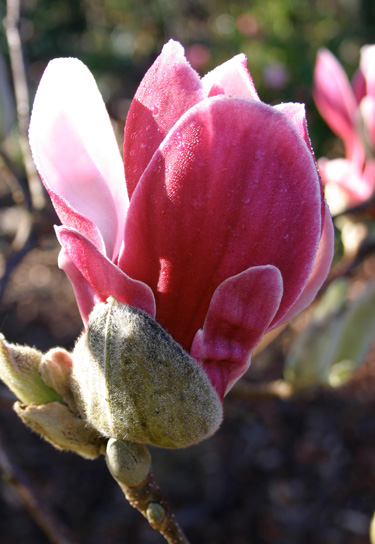
Magnolia soulangeana variety

Michelia Fairy Cream
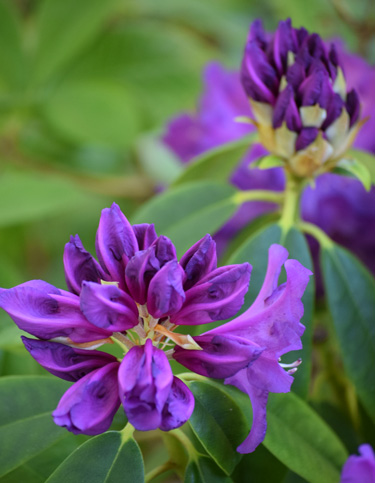
Rhododendron
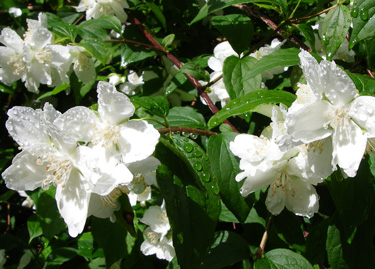
Philadelphus
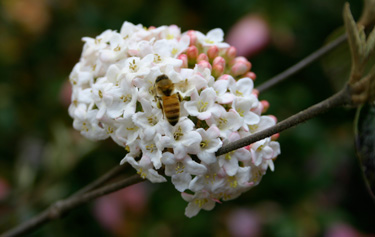
Viburnum carlesii
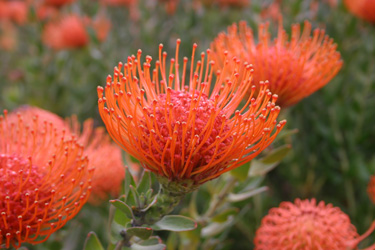
Leucospermum
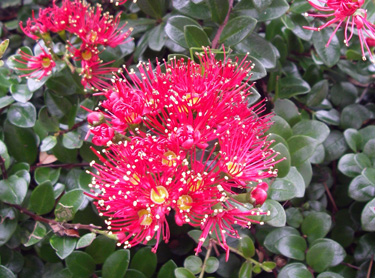
Metrosideros carminea


